It’s only been a few months since the last update to Friday the 13th: The Game, but in that short space of time, the combined teams over at Gun Media and IIIFonic have been furiously making announcements, pledging new features at an absolutely manic rate.
Video Games
Review | Resident Evil 7 Biohazard
Harrison reminisces on his time with the Bakers in our review for Resident Evil 7, Biohazard.
Outlast 2 First Impressions
Outlast 2 looks set to make some big and impressive changes from it’s predecessor.
Horror Games: The honourable mentions
A final (late) addition to Harrison’s horror game series, this time featuring not just one recommendation but several!
What’s that? You thought I was done? Oh you poor, sweet fools. I’m afraid that you can never escape from my pretentious pontificating. No, I still have so much that I’m simply dying to share with you. The horror genre is a vast enterprise, comprised of the some of the finest games of all time. To recommend only 7 would therefore be a disservice to an incredibly diverse and prestigious gaming tradition. So, even though it’s admittedly a little late, I thought I’d pool together a collection of honourable mentions for you to take a stabat (Assuming that, like me, you have no friends or social obligations to attend to on Halloween). Enjoy. If you dare.… That one didn’t really make any sense…Sorry.
Left 4 Dead
We’ll kick off the honourable mentions with something completely different; a first person shooter. Not only that, but a cooperative first person shooter of all things! Those two concepts should never blend well with horror, as a focus on constant gun fights inherently undermines any attempts at creepy tension building (see F.E.A.R for further reference). Meanwhile, a human controlled companion provides an unwanted sense of safety and comfort, one that is clearly detrimental to the required feeling of vulnerability and isolation that is integral to horror (see Resident Evil 6 for further reference). Indeed, for these reasons, Left 4 Dead is not a scary game in the slightest. It’s an action shooter through and through, albeit one with a horror wallpaper slapped over it. Still, if you and your friends are looking for a fun, fast paced, zombie-killing time, then you can’t get much better than this.
By heavily emphasising the cooperative nature of the gameplay, Left 4 Dead is effectively the perfect team-building tool. In each of the game’s survival scenarios, you will have to work together in order to prevail, be that by sharing supplies, rescuing each other from attacks, or by coordinating last stand defences. It makes for a very engaging multiplayer experience, one that refreshingly prioritises communication and strategy.
This unique dynamic can then lead to rather effective unscripted moments of drama. For instance, if one member of the group selfishly abandons everyone and sprints for safety during an attack, they may later find themselves ambushed by a horde of monsters with no one left to save them. There’s subsequently lots of potential for water-cooler anecdotes, and you’ll soon find yourself regaling people with stories of the time an incompetent teammate kept accidentally setting off a car alarms and alerting enemies to your presence.
That’s what works so well about Left 4 Dead, the way that you keep having fresh experiences every time you play. This is aided to no end by the A.I director, a system that procedural adjusts gameplay factors like ammo distribution, enemy placement and weather effects, in order to maximise the tension of any given campaign. All in all, Left 4 Dead might not be the scariest zombie game, but it is one of the most fun.
RATING: 9/10
Dino Crisis
I’ll be perfectly honest with you, I barely remember this forgotten 1999 title. I was only four when it came out, so the only recollection I have is of watching my father play it on the PSone. I remember a T-Rex smashing through a window and I remember constantly looking around for card keys. That’s about it. I also remember an abysmal sequel in 2003 (Dino Crisis 3) which was inexplicably set in space. Anyway, I digress, Dino Crisis has one hell of a central concept at its core. It is basically Resident Evil with dinosaurs. Seriously that’s it. It’s got the same mechanics, the same design mentality, the same awkward controls and even the same director. If that sounds like a criticism however, it’s not. Classic Resident Evil is a masterclass in video game design and it’s basically the perfect template for a horror game, so there’s accordingly no shame in reusing the style in a new context. And when that new context is an intense, gory, dinosaur themed horror game, then I’m all on-board. It just works. At least, that’s how I remember it.
RATING: I don’t remember/ 10
Silent Hill 3
Whilst Silent Hill 2 stands head and shoulders above… well every other horror game ever, that doesn’t mean that we should overlook everything else that the series has to offer. After all, with a likeable protagonist, refined combat, and an abundance of imagination, Silent Hill 3 is yet another instalment in the legendary franchise that warrants classic status.
This time you take control of Heather Mason, a hot-headed teenager who one day discovers that she is being hunted by a cult that worship evil Lovecraftian gods. What I like about this game in particular, is that it refuses to simply rehash the 2nd game, something which later became the go-to-state for a Silent Hill sequel. Storywise it’s totally different; Heather has no hidden guilty past, she isn’t being punished for anything, and the reason that she is being pursued is because the villains believe that she can birth a supernatural deity. Secondly, the game isn’t even set in Silent Hill for the most part, which means that we get an entirely different creepy aesthetic and surrealist atmosphere, but one that crucially still feels in keeping with the rest of the franchise.
The scares on offer are also quite different, with an emphasis on body horror and pregnancy related imagery. For this reason, all of the creatures and puzzles are unified by the theme of child birth and conception, which makes for a nice change when compared to the generic enemies that you’ll encounter in most horror games. The title also features one of my favourite bits from the whole series, in which you visit a demonic amusement park that’s overrun with monsters. That section in particular allows for the creative minds at Team Silent to run wild with their demented imaginations, leading to all kinds of terrifically memorable moments (special mention must go to a visit to a certain haunted house ride). It also features gaming’s most sophisticated jump scare too.
RATING: 8/10
Dead Space
This particular entry was originally published at The Edge SUSU on October 31st 2014.
Before the sequels arrived to actionize the hell out of this series (with mixed results), there was the slower paced, dread filled franchise starter that nicely filled the void left behind after Resident Evil started to lose some of its mojo. Taking control of engineer Isaac Clarke, players battle their way through the stranded Ishimura starship, fighting off the monstrous nercromorphs; terrifying creatures that are a mix of Giger’s Xenomorphs and John Carpenter’s The Thing.
With a level of difficulty seldom seen in modern games and a scarcity of resources, Dead Space makes the player feel how all good survival-horror games should: powerless. The ingenious mechanic that dictates that your enemies  can only be killed by the strategic dismemberment of their limbs also forces more trigger happy gamers into being conservative with their ammo, so that there’s a real tension to every encounter.
can only be killed by the strategic dismemberment of their limbs also forces more trigger happy gamers into being conservative with their ammo, so that there’s a real tension to every encounter.
Several of the scripted scares are orchestrated with distinct panache (that bloody ending) but where Dead Space really excels is in its atmosphere. Deservedly winning several awards for its lighting and sound design, the game expertly inflects every crevice of the stunningly realized environment with a genuine sense of threat and the unknown. Rarely has sound been so pivotal to a gaming experience, but here it really does make all the difference. Keeping you constantly on guard, the various indecipherable noises never allow you to feel truly safe and even when you venture into the oxygen free expanses of space, the eerie silences take on their own unnerving menace.
RATING: 8/10
Resident Evil Sequels
If you’ve already played through the first game in this landmark series but are still hungry for more, then worry not, there’s still a whole back-catalogue of hits to plough through. Each game has something unique to recommend, from Zero’s inventive gameplay style that has you simultaneously control two characters, to 3’s groundbreaking use of the relentless stalker boss; Nemesis. Whilst Resident Evil 4 is undoubtedly the franchise’s high point, its action-oriented bent makes it a harder sell for Halloween. Therefore, my pick for the best horror resi game has to go to the seminal Resident Evil 2.
Relocating the action from the Spencer Mansion to the nearby town of Raccoon City, this sequel ups the ante in every department, without sacrificing the restraint and attention to detail that made the first game so hugely successful. With a larger map, even smarter puzzles, more varied scares, better combat, and the same signature level design as before, this is a truly magnificent follow up that improves upon its predecessor in almost every respect. It also has the distinction of including one of my favourite gaming creatures of all time, the hideous Lickers.
RATINGS
Resident Evil 0: 7/10
Resident Evil 2: 9/10
Resident Evil 3: 8/10
Resident Evil 4: 10/10
Resident Evil 5: 8/10
Resident Evil 6: 3/10
Grabbed by the Ghoulies
Apparently this endlessly quirky and quaintly charming adventure game garnered a relatively mixed reception upon its debut, which is something of a shame. It might not be a classic, but it holds a special place in my own heart, albeit largely for nostalgic reasons.
In this underrated children’s title, you control Cooper, a young boy who ends up at a creepy mansion after taking a wrong turn during his travels. When his girlfriend is kidnapped by the nefarious Baron Von Ghoul, Cooper makes it his mission to get her back by any means necessary. This largely entails exploring the spooky residence and battling all kinds of colourful and cartoonish creatures, from staple monsters like Vampires, Mummies and Skeletons, to more oddball creations like possessed household appliances, ninja imps, and vampire chickens.
Gameplay consists of simple beat-em-up mechanics that allow you to use almost any item in a given area, like chairs, fire extinguishers and even billiard tables. Each room is basically a mini-level, designed to be completed in about 1-2 minute(s). The catch however, is that there will be a specific challenge or rule enforced upon every encounter. For example, you might have to complete a room in under a certain time limit, or without breaking any nearby items. Should you fail to meet the imposed criteria, then the Grim Reaper will appear and pursue you relentlessly throughout the rest of level. The Reaper is an especially intimidating foe, as he cannot be killed, yet can mercilessly defeat you with a single touch. Of course, it’s not impossible to clear a stage with the Reaper on your tail, but it is difficult, so you’ll want to avoid failing his tests as much as you can. This strange little mechanic makes for a really innovative gameplay experience, one that still feels fresh and unique thirteen years later.
Overall, Grabbed by the Ghoulies is a charismatic gem that has been unfairly forgotten by the history books. With a lovable art style, classically spooky score and energetic visual comedy, it’s the perfect game to accompany a more family-friendly Halloween celebration. After all, it’s basically Resident Evil retold in the style of Scooby Doo.
RATING: 7/10
P.T
Okay, this one technically isn’t a full game, but I had to overlook that technicality as I simply couldn’t ignore this chilling mini-masterpiece. After all, P.T is potentially the scariest thing to happen to gaming since Silent Hill 2. For those among you who are unaware, P.T stands for ‘Playable Teaser’. The reason for this, is that the game was intended to function as an atmospheric taste of what gamers could expect from Guillermo Del Toro and Hideo Kojima’s ill-fated Silent Hills. Now however, it’s all that remains of the tragically cancelled project. The silver lining in this cloud, is that it consequently works as a standalone title that can be appreciated in its own right, one that you absolutely need to check out.
The ingenious premise is deceptively simple. There’s no combat. There’s no hiding. All that you do is walk around in a circle repeatedly. That’s it. In this teaser, you play as an unidentified man who finds himself caught in a Groundhog Day style time loop. Forced to walk in an endless cycle around a suburban house, you gradually start to notice that things are changing each time you pass through. At first it’s just little details; a door might open a crack, some new sounds might be heard, or cryptic writing might appear on the wall. But as it goes on, things get exponentially creepier, and you’ll soon find yourself dealing with a ghost, a talking paper bag and an undead fetus in a sink. No I did not make any of that up by the way.
The location is totally restricted to a single L-Shaped corridor (and a bathroom), so in terms of level design this is as minimalist as they come. And yet, the developers constantly find new ways to make the repeating location feel engaging, be it by introducing new clues and threats, or simply by changing the lighting. This claustrophobic setting has a profound effect on the game, as it it creates an unbearable sense of unease. Because the location is so small, you know that you’re never more than a few feet away from the next horrific occurrence. You’re never remotely safe. Much like in Silent Hill 2, you get the feeling that you’re literally playing through someone’s nightmare. And for whatever reason that really seems to appeal to me.
Speaking of nightmares, this game gave me a couple of my own, mostly thanks to Lisa. Never before has a video game antagonist effected me to the point where I was afraid to sleep at night. You see, I normally can’t be scared of gaming characters outside of the virtual words that they inhabit, because I’m all too aware that they’re just pixels on a screen. Lisa is different however. She lingered with me until long after I finished P.T.
A pregnant woman who was murdered by her husband, Lisa’s spirit shows up throughout the game at unexpected intervals, purely to scare the crap out of the player. Her uncanny movements, permanent smile and missing eye may give her a horrific appearance, but it’s her unpredictable behavior that really unnerves you. You never know when she could be waiting right behind you, or when she might be watching. The only warning you ever get is the radio’s instructions to ‘look behind you’ (a course of action I wouldn’t recommend) and her signature sobbing. The fact that these hysterical cries are indistinguishable from her insane fits of laughter is perhaps the scariest thing of all however. I really can’t stand her. I mean that as a compliment by the way, she was a properly terrifying creation.
Unfortunately, I can’t recommend that you play P.T if you haven’t already, as Konami have since removed it from the PlayStation store. I can therefore only suggest that you look up a commentary-free playthrough on YouTube. It won’t be the same, but it’s better than nothing I suppose. Just be prepared to sleep with the light on.
RATING: 9/10
Okay that’s it. Shows over folks. I got nothing else to give you. I can only apologise to those people who have been waiting for their favourite games to be name-checked, only to be disappointed in the long run. Yes I am more than aware of Amnesia, Condemned, Eternal Darkness and Fatal Frame, but frankly it’s my list and if for some reason you’re upset by any perceived omission, then please don’t get pissy about it. God knows those games are all bound to crop up in other lists elsewhere (even if Condemned is grossly overrated).
Anyway, thanks for sticking with me through all this. It means a lot. Now I just need a spooky pun to sign off with…. Erm… It’s been a real…. Scream! ….That’ll do. I don’t know how the Crypt Keeper comes up with this shit on a regular basis.
What is Survival Horror: A look at the legacy of Resident Evil
Take a trip to Racoon City for Harrison’s break down of what made Resident Evil stand out.
Those who know me have probably heard an awful lot of pretentious babbling about why Resident Evil 4 is the greatest game ever made. From incredible level design, to memorable boss battles and immensely satisfying combat, it’s a game that does just about everything right. But the more observant among you will have noticed that that is not the game I am recommending today. Nor will I be recommending it at any point in this series.
‘Why?’ you ask (Although I may be overestimating how much you care). Well the reason that Resident Evil 4, the best game in the franchise by a mile, is not the subject of discussion today is because it’s not really a horror game. It has scary elements for sure, and it’s unbearably intense at times, but realistically it feels much more like an action-adventure release than a proper horror title. In fact, you’ll probably notice that some die-hard Resifans resent the game, as it is often cited as the moment where the franchise began to loose touch with its roots.
But you can’t do a protracted horror feature without at least making a passing reference to the genre’s most famous golden goose. After all, Resident Evil popularised horror gaming, and is basically the reason that I fell in love with the art-form in the first place. Sure, there are horror games that pre-date the franchise (Alone in the Dark, Clocktower, Sweet Home), but this is the first one that was really any good and it established 90 percent of the conventions that came to define the genre in the following decade.
Every trope- from limited ammo and health supplies, to the curious emphasis on riddles and exploration and even fixed camera angles-started with this game. This is the real genesis of what we call ‘survival horror’. For those who don’t know, ‘survival horror’ is the best kind of spooky gaming experience that you can get. It’s a sub-genre that towers above all others, including action-horror, stealth-horror, stalker-horror, and first-person horror. The reason for this, is simply because it has the best pedigree out of any of them.
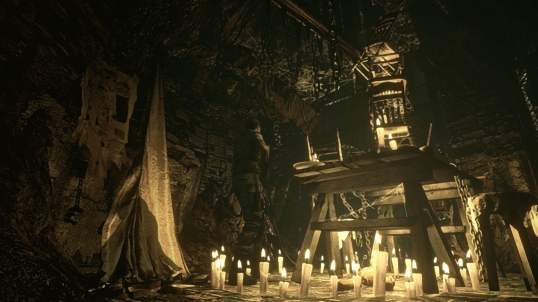
You see, there was a time when survival horror was producing hit-after-hit, with industry titans Silent Hill and Resident Evil both leading the charge. By the way, in case you were not aware, Silent Hill and Resident Evil are generally accepted to be THE definitive horror games. If you ask most people to pick the best franchises in gaming, you can almost guarantee that at least one of those two will come up. So it goes without saying, that when they were at the height of their powers, it was a wonderful time for horror. Ergo, when you talk about the golden age of horror games, you’re basically talking about a time when these two franchises were reigning supreme, and by extension, a time when survival horror was dominant.
So what constitutes survival horror exactly? Well I’ll break it down for you, and I’ll use the first Resident Evil as an exemplar specimen. First and foremost, the sub-genre is primarily concerned with a unique brand of tactical combat that prioritises efficiency, carefulness and supply conservation. These games are brutal with their health and ammo, and Resident Evil is no exception in this regard. The go to strategy is therefore to avoid combat as much as possible. Notice however, that combat is still a core element of the survival horror game. These titles will at some point require you to go toe-to-toe with your enemies, unlike say Outlast or Amnesia. Still, they’re not outright action games either, and won’t allow you to go in guns blazing. It’s a delicate balancing act that Resident Evil executes flawlessly; giving you the mentality of a hardened survivor, rather than a useless victim or overpowered super soldier.
Being considerate with supplies is thus the key gameplay mechanic, as well as general inventory management. Indeed, you’ll only be able to hold so much at a time, requiring you to choose your items wisely. Resident Evil even goes as far as to make mandatory items like keys and puzzle objects take up space, which means that you can only ever take a limited amount of firepower with you. If this sounds restrictive or harsh, that’s because it is, and it also makes things unbearably risky. Every time you enter a new area, you wont know if you’re adequately equipped for it, in fact, for all you know, there could be a boss battle just around the corner.
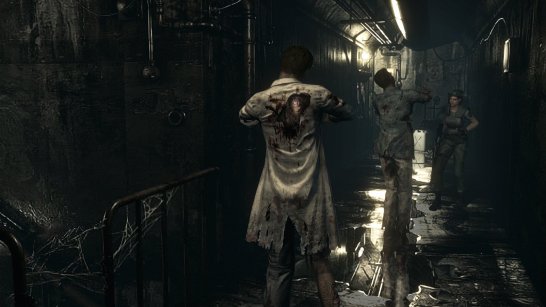
One area in which Resident Evil does admittedly go a little overboard is with dictating the amount of saves that you can have, as you are forced to use a limited amount of ‘Ink Ribbons’ in order to record your progress on a typewriter. I mean, I’m all for punishing difficulty, but sometimes I just need to save because I’ve got shit to do elsewhere. I don’t want to feel like I’m at a disadvantage because I used one of my ribbons when I needed to pop down to the shops.
Another convention of survival horror is the distinctive use of setting. Games in this genre will typically be set in a handful of locations, ones in which you will feel confined and imprisoned. You will then backtrack around these labyrinthine areas, looking for keys to doors, that then lead to keys for other doors, that then lead to keys for other doors, and so on. It means that you’re constantly travelling back and forth across a single area, unlocking more of it piece by piece.
In Resident Evil, that setting is the infamous Spencer Mansion. Whoever the architect of this place was, he had one hell of a job to do. Areas are blocked off for all kinds of reasons, be it that you need to locate objects to slot into holes (oo-er), find keys to open doors, or solve obtuse puzzles in order to unveil secret passages. I have no idea how the original owners got around, if they wanted to visit the garden they’d first have to find 4 separate keys, 2 different emblems, a sheet of classical music, 4 ornate masks, a specific lever, and some jewels. Then I guess they’d have to put them all back in their original places when they were done. They must have, because that’s where we find them.
Again, this might sound like a lot of hassle, but it is perhaps the game’s greatest strength. You get to learn every brick of this mansion by the time you’re done, and you become familiar with all the short-cuts and dead-ends. As a result, every locked door will gnaw insistently at your brain and you won’t be able to let it go. You’ll have to get through there. You’ll need to know what’s on the other side, and when you finally get to it, the reward will feel thoroughly earned. It just appeals to the completionist sensibility in all of us, as you check off each room of the mansion one by one. The backtracking also helps the pacing of the experience immensely, as you gradually peel back layer after layer of the environment, uncovering new mysteries and new threats.
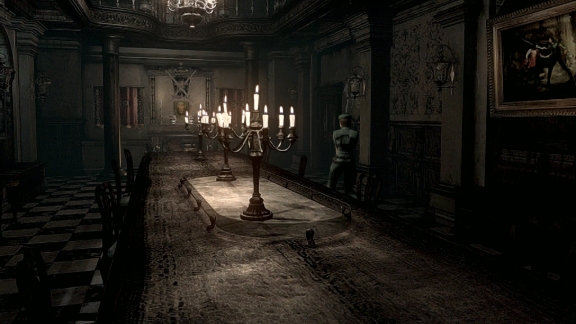
I’d take a well designed single location like this any day of the week over a bland and empty open world. The Spencer Mansion is a creepy ass residence with a boatload of charm and hidden intricacies. This is one of the things that I miss the most about old-school horror gaming.
Survival Horror also revolves quite heavily around complex puzzle solving, something which is certainly front-and-centre here. And these are no simple filler puzzles either, this stuff requires you to think outside of the box. In fact, scrap the box altogether, some of these conundrums would leave the fucking Riddler scratching his head! Half the time you’ll be trying to come up for a solution for hours, only to realise that you don’t even have the required tools yet. Once again, I’m sure that this probably sounds off-putting, but you soon get into the swing of things, and you’ll appreciate the way that the puzzles break up the scares. After all, what’s the point of them being there if they aren’t going to challenge you?
Oh and as for scares, survival horror games usually employ a very specific type of threat. It’s less about being hunted by a ghost or sneaking around maniacs in the dark, and more about fighting off a variety of diverse creatures. In Resident Evil’s case, the monsters are all the result of genetic experiments occurring in a lab beneath the mansion. They come in a plethora of different forms, from zombies (before they were in everything), to giant spiders and mutant reptiles. They all behave in different ways and have their unique abilities, which keeps combat feeling fresh and interesting. Indeed, you’ll never encounter too many of the same enemy type. The bosses are also pretty great, especially if you pick up the 2002 remake, which features the absolutely terrifying Lisa Trevor.
The remake also introduces a neat little twist on the standard zombie enemies, in the form of the imaginative crimson head creatures. These are effectively super-zombies, with their name deriving from the red pigmentation of their skin. They’re fast, strong, and very hard to kill. The gimmick with these creatures, is that they only appear after you’ve killed a traditional zombie. If you return to an area in which you previously put down one of the undead, then there’s a chance that it may be up and walking again, now as an upgraded crimson head. The only insurance you have to prevent this, is to either burn zombie corpses with a lighter (which has a limited supply of oil), or to pull off a headshot, which is tricky with the fixed camera angle perspective.
This changes the entire game, as you’re never sure if you should risk killing a zombie, just in case you have to return to the area again later. It creates a wonderfully scary dynamic, where you’re constantly worrying about your oil, your bullets, and the monsters heading towards you. It’s a genuine predicament; do you leave the zombie be, do you kill it and use up some of your lighter fluid, or do you gamble and hope that he wont turn into something worse later?
You’ll try your best to ensure that you never have to deal with the crimson heads, but I promise you that you’ll fail. And that’s a good thing, because the constant fear that they might show up, makes for one of the most exhilarating experiences in any video-game.
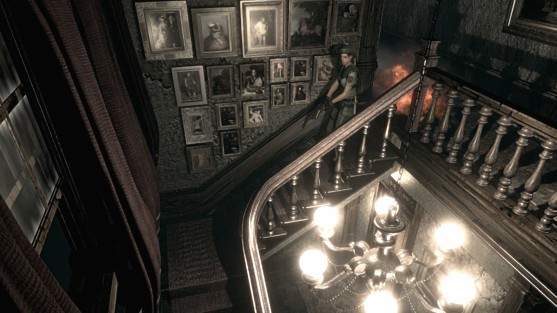
Survival Horror is also by far the most heavily directed style of horror game. What I mean by this, is that all of the scares are pre-meditated and designed under very precise conditions. To many modern day gamers, this may sound like a bad thing, but it really isn’t. Random encounters are grossly overrated, and unscripted scares are never going to be as effective as the work of a true master. Honestly, I don’t mind getting a very linear experience, if it’s one that has been crafted with the utmost attention to detail and care. Resident Evil is again an exemplary instance of this, with almost every moment being an iconic fright that never fails to deliver. There’s so many legendary scenes in this game, like the unforgettable initial zombie attack, or the bit where the dog jumps through the window.
It’s so good to have a game this meticulously designed, as it means that you get the optimum experience desired by the developers. It’s for this same reason that the fixed camera angles work so well, instead of hindering your enjoyment. Each change in perspective is entirely deliberate and has a specific purpose, be it to guide you to a specific item, or set you up for a really good jump scare. It also plays with your perspective in interesting ways, by keeping enemies obscured and out of sight, or tricking you into thinking that something is behind you, when it’s actually a reflection in a mirror.
In short, Resident Evil is a textbook example of a great survival horror game. It has deep gameplay, intricate design, and a suitably intense combat system. Most importantly of all though, it is more than capable of delivering a good scare.
Well, that’s our penultimate entry taken care of! You can’t get much better than this masterpiece. Having said that, I have saved the best for last….
RECOMMENDATION: FOR THOSE WHO WANT TO IMMERSE THEMSELVES IN CLASSIC SURVIVAL HORROR AND SEE WHERE IT ALL BEGAN. ALSO A DECENT PICK FOR FANS OF B-MOVIES, CREATURE FEATURES AND ZOMBIE FILMS.
RATINGS:
ORIGINAL- 8/10
REMAKE- 9/10
Silent Hill 2 and the Horror Art game
Here we are, my number one pick, the best horror game of all time; Silent Hill 2. This one is seriously disturbing on a deeply psychological level. And yet it’s also more than just a scary experience, as it happens to be a legitimately moving tragedy and one of the best cases for gaming as an art-form in existence. It is a dark, intriguing, thematically complex journey into madness, and over the course of its runtime, it takes you to some very uncomfortable places. Even better, it does it all in a way that no other medium could. This masterpiece embraces the potential of gaming’s unique relationship with the player, and thrusts you right into the shoes of its protagonist in a way that is unprecedented . As a result, all of the feelings of loss, isolation, guilt, and fear are permitted to be almost too tangible. No other game in this series of reviews has received a 10/10 from me, because no other game in this series has affected me so much on an emotional level. With its rich themes, multi-faceted characters, unparalleled atmosphere and astonishingly original story, this really puts things like The Evil Within to shame.
The game tells the story of James Sunderland, a grieving widower who inexplicably receives a letter from his dead wife, Mary, asking him to find her in the remote town of Silent Hill. As you can well imagine, James is more than a little perplexed by this, but the way he sees it, he has nothing left to lose. So he decides to journey into the isolated town, hoping to find the ‘special place’ that Mary refers to in the letter. Upon discovering that the town is cut off by road, James is forced to venture into Silent Hill by foot. He soon realises that that might not have been the best idea however, as the town is completely engulfed in a supernatural fog, one which brings with it hideous demonic creatures. The very few people that James does encounter are in a bizarre, dreamlike state, speaking in enigmatic ways and barely reacting to the absurdity of their situation. They all seem to be in their own separate realities, and James accordingly comes to the conclusion that they wont be much help to him.
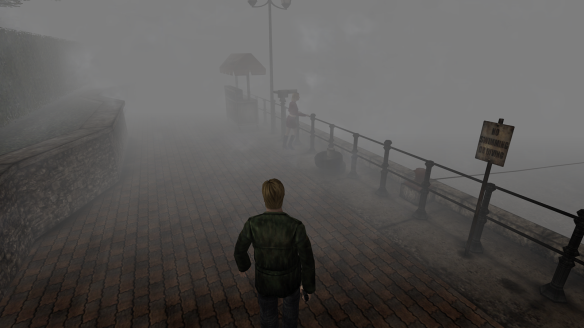
To say anything more about the plot of this game would be a massive disservice to the unbelievably engrossing story. This is one that you really ought to experience for yourself, as the various twists and reveals really do pack a hefty emotional punch. Indeed, this is my all time favourite video-game narrative, because its so unlike anything else and because it’s told in such an artfully subtle way.
As I briefly touched upon in the intro, this is one story that would not function half as well were it film, TV show, book, or anything else other than a game. This is because Team Silent find beautiful ways to communicate complex things to us, using the specific language of video-games. A lot of the best examples would unfortunately constitute as spoilers, but just pay attention to every little detail and you’ll notice that almost everything has some kind of symbolic value or function, right down to the contents of your inventory, the gameplay mechanics and even the amount of damage dealt by certain weapons.
For instance, at one point you’re asked to surrender all of the items that you have and place them into a nearby container, so that you can ride an elevator without exceeding its weight limit. Now it’s important to understand that you’ll have accumulated a lot of objects during your time with the game, so to get rid of each one individually is something of a chore, especially when it requires you to enter in several button prompts per item. Naturally, you’ll begin to grow impatient with this process, and will subsequently hammer the X button in order to get the whole ordeal over with, barely registering what your getting rid of. That is, until you come across an image of Mary, one which you have been carrying with you throughout the game. As soon as you arrive at this photograph, you will encounter a brief delay. It might not even register at first, but there’s a bit of lag between you hitting X, and the menu asking if you want to relinquish the photo. This is an amazingly subtle moment of character immersion, one that makes you feel James’ unwillingness to let go of the past along with him. It’s incredibly innovative, and the game is filled with so many moments just like this.
Even the puzzles and enemy designs are used to push us deeper into James’ subconscious. Riddles will involve items that relate specifically to our hero’s past, and will often implicitly reference a hidden truth that he has locked away inside. Similarly, the haunting creatures that James encounters all stand in for his own anxieties and fears, in ways that are understated and require genuine thought.
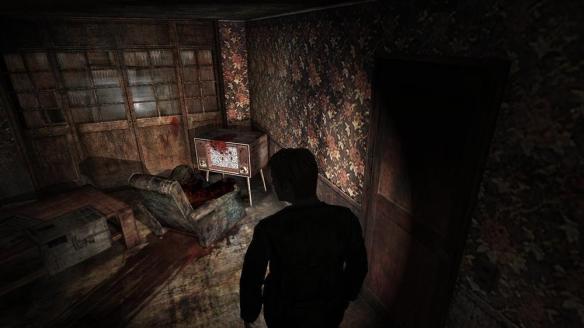
Special mention has to go to the truly terrifying Pyramid Head, a hyper-masculine, utterly relentless pursuer, who can be found routinely killing and sexually assaulting the female characters of the game, including the other monsters. That might sound incredibly messed up, but there’s a very good thematic reason for all of this, beyond just adding cheap shock value to the game. In fact, once you come to understand Pyramid Head’s role in the story, you’ll notice that there are so many nuances to his character, including aspects of his behaviour and his visual design, all of which really flesh out this monstrous tormentor. He thus emerges as one of the most intriguing and simultaneously terrifying horror villains in all of fiction.
The game does a good job of not spoon-feeding you any of its subliminal content as well, and lets you work out all of the intricacies for yourself. Once you have done this, you realise just how much depth there is to the characters and the narrative here. You being to understand that the town of Silent Hill is clearly trying to torture James with the memory of his wife, and that just like everyone else in the town, he appears to be trapped in his own idiosyncratic purgatory. In other words, the game basically takes place in a nightmare realm tailored specifically to James’ own personal demons. This makes repeat playthroughs not only worthwhile, but debatably even more enjoyable, as you begin to pick up on the relevance of certain key motifs and images, such as the moths, the execution devices, the heavy breathing sounds, and the prevalent psycho-sexual imagery. At first glance, many of the strange things you encounter in the town might just seem like they’re there purely to creep you out, but EVERYTHING has a deeper layer here.
What’s so great about all of this, is that it still works as suitable nightmare fuel if you choose to ignore all of the hidden meanings. Indeed, if I’ve put you off with all my pseudo intellectual claptrap, then let me assure you that this is without a doubt the creepiest game I’ve ever played. The atmosphere is almost intolerably oppressive, with the famous thick fog effect smothering you and obscuring your vision to an insane degree. This spooky tone is even further articulated through the chilling art design, eerie camera work and magnificent musical score. All of these elements combine to create a deep-seated sense of paranoia. You’ll constantly feel like you”re being watched by a omnipotent sinister force, a sensation which is magnified exponentially by the incomparable sound design.
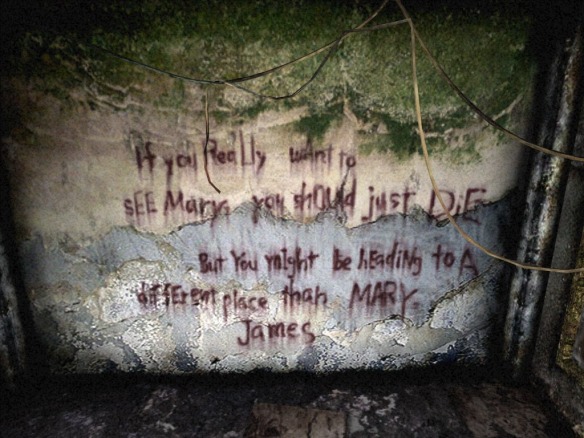
I really want to expand upon this, because for my money, the audio in this game contributes at least 80% to the overwhelming feeling of dread. Akira Yamoka (composer and sound designer) is a true genius in this regard, as he inflects every single room, every single corridor and even the exterior environments with a threat that images simply cannot convey. With Bloodcurdling screams, harsh industrial noises, and sounds that seem to have no earthly origin whatsoever, the audio landscape here is obscure, completely unfamiliar, and frankly petrifying.
One particular scene sticks out in my mind as one of the most unconventionally scary moments in all of media. As James, you arrive at the Silent Hill historical society, which is basically a museum concerned with local history. Walking through the building, you can hear a faint, muffled droning sound in the distance. As you make your way through the museum, the sound gets louder and increasingly clearer. Eventually, you come across a hole in the wall, with stairs leading down into a mysterious dark abyss. With warranted trepidation, you begin to head down the stairs, and into the dark unknown. It’s a very claustrophobic moment, as the further you descend, the tighter the stairway gets, with stone walls closing in on you. That’s scary enough, but it’s the sound that really does it. You see, the further you go, the louder that droning sound becomes. Eventually you realise what it is. It’s a fog horn, and it’s signalling your arrival.
With each step it increases in volume and frequency, building and building to a cacophonous level. Something is obviously waiting for you down there, and whatever it is, it’s been a long time coming. It might sound silly on paper, but this scared the crap out of me when I was first playing it. I practically never react to these horror games, because I’m desensitised to them from overexposure, but I’d never seen anything like this. This minor, very low-key moment reduced me to a nervous wreck with just a little bit of darkness and a fairly mundane sound effect. That’s how great this game is, it can do so much with so little, to the point where this otherwise uneventful moment had me muttering ‘Please, I don’t wanna go any further!’ in absolute dread. I can’t even determine why it disturbed me so much, because like everything else in this game, it’s so heavily abstract and usual.
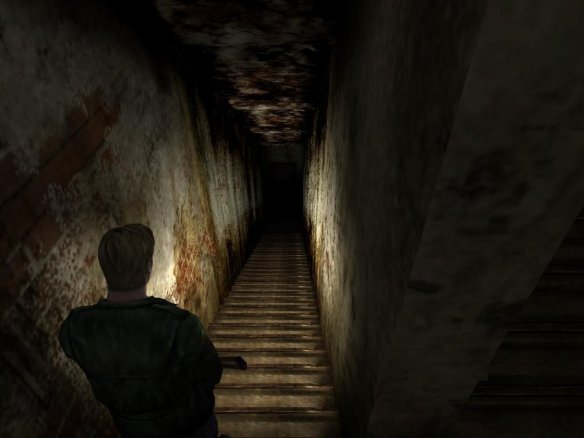
I implore you to play this under the proper conditions, because it doesn’t rely on any gore and it has no jump scares, instead it banks solely on atmosphere and pure psychological horror. So please, wait until dark, turn off the lights, and play on your own, because it will freak you out on a profoundly primal level. I keep returning to the word ‘nightmarish’ here, but that’s exactly what this reminds me of; it’s like playing through a nightmare.
Even the level design seems to evoke this idea, with its confusing, often shifting geography. There’s one point where you just keep jumping into a succession of pitch-black craters, ostensibly descending further and further without getting anywhere. You then end up in a flooded underground labyrinth, where every corridor looks the same, and there’s seemingly no logic to the layout of the environment. Going up one ladder leads to an elevated corridor, but then going down the ladder at the other end seems to take you back in a circle. Elsewhere, one door takes you to an entirely new area, but the next one you come across somehow returns you to an earlier point in the maze. It’s confusing, disorientating and totally thrilling, especially when you’re being pursued by unknown creatures in the dark.
Speaking of the unimaginable terrors that lurk in Silent Hill, the creature design here is among the best of all time. I know I talked a lot about the sounds and what you don’t see, but the visuals here are just as sublime. Taking cues from figurative artist Francis Bacon, Team Silent come up with some spectacularly abstract and original monsters here, which have evidently been carefully crafted to have the maximum psychological impact. They’re all thematically consistent too, playing upon ideas of deformed femininity and distorted sexuality, in a way that’s more than a little reminiscent of David Cronenberg. I don’t want to get too academic here, but you could write a whole book about the Freudian implications of some these villains, from the faceless nurses with exaggerated breasts, to the uncanny ‘flesh lips’ and the horrific ‘abstract daddy’ monsters, which have a very… shall we say evocative method of attacking you. Once again, when you grasp what this game is really about, you’ll be spotting all of these things for yourself.
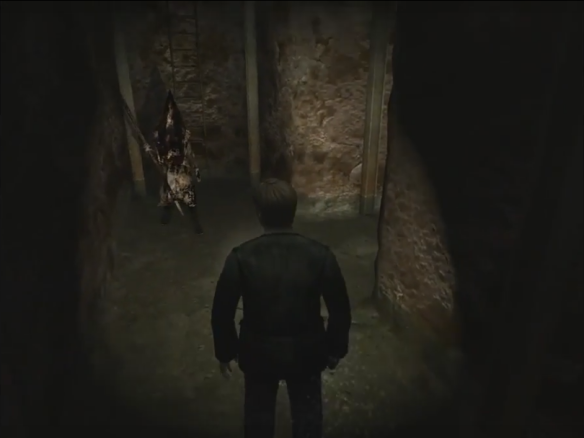
The last thing that I really want to mention is the game’s unique approach to its various endings. Of course, branching narratives are a dime-a-dozen these days, so having more than one conclusion is nothing special anymore. Yet Silent Hill 2 does something that, as far as I can remember, I’ve never seen in any other game before. You see, your ending is the result of how you ‘psychologically characterise’ the protagonist. That’s not to say that James is a blank slate, he’s still very much a well defined character, but he is shaped a little by your actions.
What does that mean exactly? Well basically, rather than letting narrative decisions determine the ending of the game, Silent Hill 2 judges the protagonist based on your play style. There are numerous factors that contribute to James’ profile, including how often you examine certain items, how much time you spend in certain locations, and how effectively you protect certain other characters from damage. For instance, your ending partly depends upon how conservative you are with healing supplies. Should you consume ‘health drinks’ readily every time that you receive damage, then it implies to the story that James wants to live. Equally, if you’re a little more stingy with your supplies, then it suggests that James lacks a real concern for his own self-preservation. These opposing character traits can then result in two wildly different conclusions to the game.
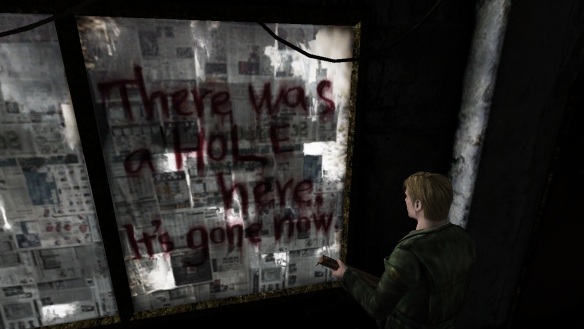
It’s such a masterstroke of design, one that makes your actions explicitly effect the characterisation of the protagonist, as well as the narrative itself. We live in an age where people like to criticise examples of ‘ludonarrative dissonance’, even when they don’t fully understand what the term means. However, you very rarely hear of people similarly praising ludonarrative resonance, a concept that should enrich your experience with a game, and make you feel like an active participant. Well Silent Hill 2’s ending system is a wonderful example of this in action, and it really deserves to be acknowledged as an innovative way of synthesising gameplay and story.
By now it should be apparent that I have nothing but praise for this game. It’s smart, it’s original, it’s psychologically complex and the characters are well developed and explored. However, above and beyond else, it succeeds as a genuinely effective horror story, one that will get under your skin and unsettle you in fresh and unique ways. In short, this is the epitome of what video-games can accomplish when the right amount care and effort is applied to them.
RECOMMENDATION: IT’S HARD FOR ME TO RESIST THE URGE TO SAY THAT ‘EVERYONE SHOULD PLAY THIS’. IF YOU LIKE GOOD GAMES, THEN THIS IS SIMPLY A MUST-PLAY! HOWEVER, I WOULD GIVE A SPECIAL SHOUT OUT TO PEOPLE WHO APPRECIATE CREEPY AND GENUINELY UNSETTLING PSYCHOLOGICAL HORROR.
RATING: 10/10
How Alien: Isolation became the best horror game of the current generation
Its structural perfection is matched only by its hostility. Harrison reviews Alien Isolation.
The specific formula that was set in place by Outlast has since been imitated time and time again, mostly by a multitude of Steam hacks trying to exploit the craze. It’s a style that regrettably lends itself to cheap rip-offs and cash-ins, as it can so easily be replicated with the minimum amount of effort. You don’t have to program in combat mechanics, the oppressive darkness can also be used to hide low-rent textures and graphical shortcomings, and you barely even have to try to be scary. All you need to do is throw the player in a dark corridor, have them be stalker by a single enemy, and add in some obligatory jump scares for good measure.
Now obviously that isn’t the case with Outlast itself, otherwise I wouldn’t have recommended that game. However, it remains the case that the legacy of Red Barrel’s hit has been less than stellar. I try not to hold anything against it of course, after all, you can’t blame it for being popular, it’s merely The Blair Witch effect. When Outlast did it, it was fresh, unique, and truly scary, but when everything else did it, it sucked. That is, if we exclude one notable exception; Alien: Isolation.
This was a game that by all accounts should have been terrible. It was a movie tie-in, and it was also following in the spectacularly inept footsteps of the now-infamous Alien: Colonial Marines. It goes without saying that neither of those things boded well for the project. As well as this, it was yet another first person horror game, one with generic crafting and stealth mechanics to boot. With all of this counting against the title, t’d be a miracle if you even managed to get your console to play the damn thing without exploding in protest.
And yet, against all odds, Alien: Isolation managed to not-suck. Who am I kidding? It managed to be bloody brilliant! Dripping in atmosphere, with expertly designed environments and one of the best antagonists in gaming, this is probably my favourite game from the current console generation. Now how the hell did that happen?
Stranded upon the Sevastopol orbital station, you control Amanda Ripley, who is following a lead to track down her missing mother. However, whilst the objective is initially to find out what happened to Ellen, the plan soon runs into a tiny speed bump. And by ‘tiny speed bump’, I mean that everyone on-board the station is either dead, or homicidal. The reason for their bellicosity soon becomes apparent, as it turns out that there is a xenomorph on board, and it has been causing all kinds of mayhem for the crew. Not only that, but the company androids (the once helpful and courteous ‘Working Joes’) have also inexplicably turned violent. Amanda must therefore put her search mission on hold, and focus primarily on getting out of Sevastopol alive, and preferably unmolested by the hideous, inhuman space rapist.

As aforementioned, the game heavily borrows from the precedent established by Outlast. As Amanda, you’ll engage in what is effectively a 20 hour long game of hide and seek with the Alien. You’ll hide in lockers, crawl through vents, sprint for your life, and generally cower like a baby whilst something mercilessly hunts you every step of the way. You even have to hunt for batteries again (YAY!).
But there are some valuable tweaks to the formula, ones that importantly raise this game above the quality of its forebear. For a start, there’s a lot more you can do here to outsmart your hunter. You can throw distractions, manipulate the ships systems in order to change the environment, and most usefully, you can ward it away with fire. You can even use the beast to your advantage in some situations, luring it to take out a room full of human enemies before you progress.
Generally the gameplay is a little more varied as well, including hacking mini-games, exploratory sections, and even some light gunplay. The biggest improvement however, is that the level design is much more open ended, providing you with labyrinthine environments which you can navigate in your own way. In Outlast, there was only ever one correct route through an area, be it via a ventilation shaft, a door, or a hole in the wall. Contrastingly, in Alien, you will have multiple paths and strategies at your disposal, which results in a much more dynamic experience.
Of course, you’ll need all of these options when it comes to dealing with the titular xeno. With exceptionally advanced AI, this predator cannot be cheaply exploited like many other gaming foes. It appears to learn your tricks, and not only that, but it seems adapts to them too. No matter how many times you play through an encounter, it will never pan out in exactly the same way, because this creature has no preordained patrol routes, it can go anywhere, at any time and it can find a way into any location. In short, it cannot be predicted. This makes the xenomorph is a truly formidable antagonist, one that is much more imposing than any other horror enemy.
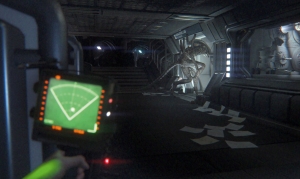
It’s attacks are spontaneous, random, and unscripted, meaning that it will follow you anywhere and everywhere (even into vents). Meanwhile, it has the obvious advantages of being faster than you, more agile and incredibly perceptive, not to mention that it is additionally capable of killing you in a single blow. It’s for this reason that you have all of the aforementioned tricks up your sleeve, because you’ll need to utilise everything in your arsenal in order to survive.
Because of the largely unscripted nature of the creature’s appearances, you’ll never know when it will show up, which makes for an unbearably tense gaming experience. I’m serious, you’ll never feel truly safe, and will constantly be checking corners for telltale signs of saliva and looking at the motion scanner for hints of nearby activity. By the time you reach the end of the game, you’ll be a paranoid wreck, one who twitches at every meagre noise or shadow.
Speaking of sound and lighting, this has to contain some of the best in all of gaming history. It effortlessly captures the same audio-visual aesthetic as Ridley Scott’s 1979 classic, as expressionist shadows and flickering lights beautifully converge with the ambient sounds of the station to create a haunted-house-in-space vibe. What’s most impressive about this, is that so much of it is ad-libbed, despite feeling meticulously designed.
One particular improvised moment sticks out in my mind as evidence of this, wherein I stealthy worked my way through an area populated by human enemies, and then rewired the station’s systems (something which can be done in almost every room of the game), diverting the power from the interior lighting to the air purifier. The effect of this was that the room flooded with an ethereal smoke, that severely reduced my enemies’ visibility, as well as my own. Luckily, an emergency strobe light punctured through this mist periodically, creating helpful silhouettes of those in the room. I then returned to my objective (something to do with unlocking a door), but when I turned around, the room was eerily empty. There were at least 5 men in the area previously, and yet now they were all gone. Then I saw it. And it was looking for me.
Without a hint of ceremony or theatricality, the alien had slaughtered everyone in the room. There was only one man left. I couldn’t see him because of all the smoke, but I could hear his desperate cries. I could also hear the alien sprinting towards him. He unloaded his gun at the monster, but it was too late. As it grabbed him and thrust its tail through his chest, a flash from the strobe lights let me see the horrifying execution in silhouette form. The alien allowed it’s cold, dead prey to fall to the floor, and then it was gone. The strobe had flashed off, and by the time it flickered back on again, the beast was gone, and the body was buried beneath the mist. I knew the xeno was still in the room with me, I could hear it hissing and snarling, but I had no conception of where it was.
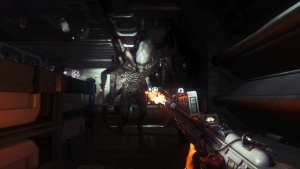
That moment has stuck with me for almost two years, yet much to my frustration, I couldn’t get it to happen again in my subsequent repeat playthroughs. It was a totally random occurrence, and yet it somehow seemed so perfectly directed! Everything from the lighting, to the sound-design, to the dramatic timing, it all felt so right. It’s a shame that I cannot guarantee that this moment will crop up for you, but what I can promise is that if you pick up this game, you’ll have a hundred uniquely terrifying moments all of your own. That’s what this game does so well, it sets up a few fixed conditions and then lets the diabolical magic happen on its own accord.
It’s also one of the few games in which I feel like I personally went through a character arc. At the beginning of my story, I was a terrified, defenceless victim, prone to cowering and panicking at the first sign of trouble. However, by the end of the ordeal, I had completed the traditional horror movie transition from would-be-victim, to resourceful badass. I had basically pulled an Ellen Ripley! My relationship with the alien had morphed from one based on a hunter-prey dynamic, into an equal rivalry. When I heard the beast skulking around nearby, I no longer scurried for the nearest hiding place. Instead, I crafted a few molatovs and readied my flamethrower. I wasn’t backing down anymore.
It’s a thrilling journey, and one that feels cathartic for the player, as it features a well-judged balance between making you feel totally helpless, and giving you just enough power to survive. Nowhere is this more apparent than with the working Joes, the game’s intimidating, but crucially vulnerable, enemies. These protocol androids are supposedly cheap knock-offs of their industry rivals, meaning that their synthetic exteriors are flimsy, rubbery, and overall quite uncanny. So they already look frightening enough to begin with, even when they’re performing as intended. Once they malfunction however, they’re almost as scary as the xenomorph itself.
In their combat mode, the Working Joes are very reminiscent of Yul Brynner’s gunslinger from Westworld in that, no matter what you do to them, they just keep on coming. Unload a revolver into their face, light them on fire, or strike them repeatedly with a wrench; it doesn’t matter, they wont even flinch. They get even more challenging when you start to encounter different variations of them, for example there are the ones protected by rubber suits, which make them impervious to any of your electrical weapons.
The Joes are yet another example of the game’s evolution upon the Outlast formula. Whilst most of these stealth horror games pit you against exclusively invincible antagonist that you can only hide from, Alien: Isolation makes the smart decision to allow you some kind of power. The Xenomorph might be tenacious and unstoppable, but you can still defeat the working Joes, allowing you some small victories.
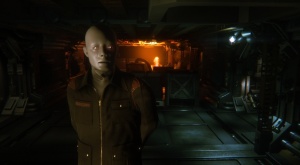
So the game is faultless then right? I mean it’s scary, it’s aesthetically pleasing, it’s well balanced, and the mechanics are enjoyable and fresh. What’s not to like? Well, whilst it is true that this is one of the closest-to-being-perfect games that I have ever played, it still falls short on one account. And to be honest, while it might just be one problem, it’s a pretty big problem.
You see, this game’s ending is abysmal. It actually goes as far as to trump Outlast in the anti-climax department. Both in the narrative and in the gameplay, this title ends on a major disappointment, with the former providing no sense of closure or resolution and the latter wrapping up as tediously as possible. Seriously, it ends with you having to go to a completely safe, alien-free zone, and then press a few buttons in order to trigger the final cut-scene. It’s such a pitiful conclusion to a game that hasn’t put a foot wrong up until that point. If it didn’t fuck up so close to the end, this would be serious 10/10 material. As it stands however, it just misses out on that prestigious distinction.
Nevertheless, there’s so much to love with this magnificent game, that I can’t help but adore it. There’s the tight storytelling, the haunting score, the charming retro-futurism and the absolutely outstanding attention to detail, especially in regards to recreating the signature art design of the original films. If you love Alien, if you love challenging gameplay, and if you love horror, then I implore you to give this stunning gem a chance.
RECOMMENDATION: THIS ONE IS PERFECT FOR CINEPHILES AND NERDS ALIKE, ESPECIALLY THOSE WITH A FONDNESS FOR SCOTT’S LEGENDARY SCI-FI HORROR FLICK.
RATING: 9/10
Until Dawn: A Choose your Own Adventure with consequences
To B or not to B that is the question as Harrison delves into the choose-your-own-adventure slasher game Until Dawn.
And now for something completely different.
So far every game in this series has been an outright horror title, which makes sense. What else would I recommend for Halloween? Well, there is something I’d like to call attention to that, whilst not strictly speaking a horror game, does at least embrace the genre’s themes and tropes and then reworks them into a new framework. That title being Until Dawn, supermassive games’ love letter to the slasher genre, which comes in the form of a branching narrative, interactive-story game.
You know interactive-story games? There those things where you can’t really fail in any way, shape, or form and instead just make decisions for characters and occasionally hit a button when it appears on screen. I’m going to employ an overused analogy, because it’s the most efficient way of describing the genre, so please forgive my laziness when I say that they’re basically like those choose-your-own-adventure books. These games effectively present you with 16 hour long cut scenes and ask you to occasionally decide what someone will say or do. I’m not a fan for the most part, as I don’t see the appeal when there are already games that include choice-making mechanics, as well as actual gameplay bits in between (Fallout, Mass Effect, Dragon Age, etc.)
However, Until Dawn is different. Until Dawn works because it taps into something that we all do when we watch slasher movies. Think about it, how many times have you watched one and found yourself yelling at the dumb characters on screen to do something differently? ‘Don’t go in there!’ you’ll cry, ‘Why didn’t you pick up the weapon?’ you ask, ‘For Fuck’s sake don’t split up!’ Well now’s your chance to prove yourself. Now you are in charge of their decision making capabilities. Do you hide under the bed or keep running? Do you investigate a strange noise or stay exactly where you are? Who lives and who dies is all up to you.You get to play God with these horny teenagers lives. And it’s so fun.
Apparently the intended goal of the player is to try and get as many of these dickbags to survive as possible. Why on earth anyone would do that is beyond me. I mean, have you ever played The Sims? If you have, be honest, did you try and look after your characters and ensure that they had happy lives? Or did you sadistically torture them for your own amusement? Yeah. That’s what I thought.
Of course you’re going to try and get these people killed, especially when they’re so annoying! They each perfectly fit into distinct genre archetypes (the whore, the good girl, the jock, the nerd, the ‘funny’ guy, the bitch, the weirdo, the black one!) and are so hip and millennial that they’re practically begging to be dismembered. I don’t want to babysit them and deprive myself of the gory spectacle. I don’t get enough control in my own life, but at least I can make these entitled pricks suffer!
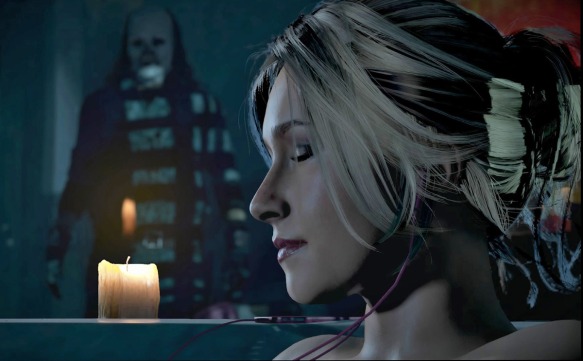
In this branching narrative department, the game does a lot right. Most importantly of all, it makes your choices actually matter! I cannot overstate how crucial that is, so many of these game’s fail to do this and have to find convoluted ways to neuter the consequences of your decisions. Until Dawn meanwhile gives you expendable canon fodder characters, who have little to do besides die, and so lets you really toy with their fates. Any of the eight playable characters can snuff it in multiple ways and in differing combinations. It’s true that the first half does keep a few alive for necessities sake (otherwise your experience could be very short), but by the time that the credits roll, you could have literally nobody left standing.
It’s so brutal with it too. Certain seemingly inconsequential decisions can have irreversible consequences, and characters can easily shuffle off this mortal coil over things as trivial as whether or not they tripped over a log. In one of my play-throughs, I managed to keep everyone alive until one bad move had a ripple effect that lead to 3 unintentional deaths. It was devastating and cathartic all at once.
The game smartly allows you to track the repercussions of your decisions via a comprehensive menu, so that you can replay and try things a different way next time. It’s a nice touch, one that you’ll come to appreciate should you ever find yourself wanting to do a play-through that ensures specific outcomes.
There are also neat little gameplay additions that differentiate Until Dawn from many other games of its kind. For a start, the exploration sequences require you to search locations for clues and objects in order to progress. What is interesting here is that, like in Alan Wake, the amount of story information you receive is dependent upon what you find, and certain narrative threads can even be locked away entirely should you miss the right pieces of evidence. Similarly, the failure of certain QTE moments can take you to slightly different locations and even set new set-pieces in motion. I was watching someone else play it recently and they failed a certain action-sequence, causing them to miss out on a whole chunk of the game that I had. It was a really great bit too, one of the best parts in fact. And they didn’t get any of it. I love that this game is willing to block access to huge chunks of the story like that. It really makes me wonder if I’ve even experienced everything that there is on offer here.
The ‘Don’t Move’ segments also deserve a special mention, as they are brilliantly intense. Here, the game uses the PS4’s motion controls to measure your steadiness. You’ll basically be asked to hold the controller as still as possible, and if you fail, your character may be detected and unceremoniously slaughtered. The harshness of these sections make it both satisfying when you succeed, and shocking when you fail. Again, it’s just damn fun, although I did lose a character because I needed to sneeze.
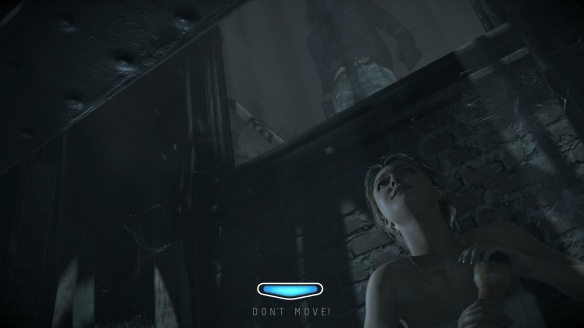
One gimmick that does seem a little wasted is the use of the psychiatrist character. In these sequences, you’ll come face to face with a therapist (played by a wonderfully OTT Peter Stormare), who will evaluate you based on your responses to certain questions. Said inquires range from ‘which of these images frightens you the most?’, to ‘which character do you like the least?’. The implication is that your results will then tailor your experience in a dynamic way. The reality however, is that your answers will only make a cosmetic difference at best. For example, if you say that you’re afraid of spiders, then a tarantula will crawl across the screen at one point. Meanwhile, the character that you specify as your least favourite, will later appear on a photograph with their face violently scribbled out. Wouldn’t it be more interesting if it were THESE decisions that had the most impact on the game? I personally would have loved to have been pursued by my greatest fear because I chose it. How awesome would that be? Choosing your own destroyer, Ghostbusters style!
Elsewhere, the actual story of the game is above-average slasher material, although it does indeed walk a fine line between functioning as a pastiche of generic horror tropes, and being a cliche narrative in and of itself. Basically, a group of obnoxious teens go on a trip to a secluded cabin (in the mountains this time, not the woods), on the anniversary of a prank that went fatally wrong. The intention of their get-together is to put the tragic event behind them (oddly enough, they do this by continuing to prank each other for the whole game) and move on with their lives. Unfortunately for them, a masked killer is roaming around the mountains, seemingly intent on forcing them to confront their pasts. It’s very I Know What You Did Last Summer, with a healthy does of Saw, Halloween: H20, and Friday 13th thrown in for good measure.
Which is fine, because whilst that would be incredibly by-the-numbers in cinema, for a video game it’s weirdly unexplored territory. Horror games are generally concerned with monsters, ghosts and people fighting back against inhuman threats. Meanwhile, slasher set-ups haven’t really been done before, meaning that this is a rare chance to see how the medium would deal with the genre. In fact, I don’t think this would work half as well if it didn’t tick all of the teen-horror boxes. Remember, the central appeal is that you’re now in control of a slasher movie! That’s not going to be as fun if you don’t get to play around with the familiar tropes.
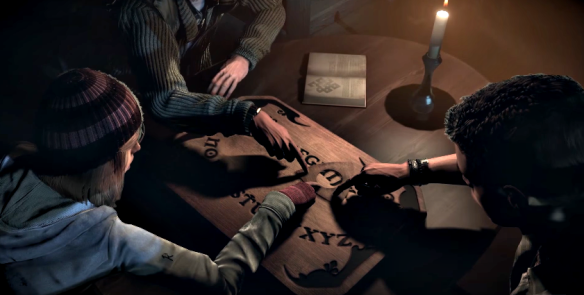
Still, there is nevertheless a 3rd act twist that changes everything up in a spectacular fashion, and whilst it may divide some people, it personally elevated the whole game for me. It’s not like it comes out of nowhere (anyone who wonders about the killer’s POV shots will see it coming a mile away), but it is a satisfying reveal that turns the tables completely for the climax. It also helps that it starts to riff heavily on one of my all-time favourite films, once the action relocates to a cave setting.
Overall, Until Dawn is an extremely fun and subtly clever game, that is disguised as a dumbest slasher flick imaginable. With tons of replay value, an intriguing mystery, and intense set-pieces, this is honestly one of the best releases of the current generation.
RECOMMENDATION: FOR THE CASUAL GAMER OR EVEN PARTIES. HERE’S AN IDEA, SAY YOU HAVE A GROUP OF FRIENDS; GET EACH ONE TO TAKE CHARGE OF A SPECIFIC CHARACTER(S) AND THEN WATCH THE MADNESS UNFOLD AS YOU MAKE ALL THE WRONG DECISIONS AND GET EACH OTHER KILLED. IT’D BE SO EASY TO MAKE A DRINKING GAME OUT OF IT.
RATING: 8/10
The Evil Within: Flying Humvee vs Psychological horror
In Day 3 Harrison looks at a game with a movie magic flair, The Evil Within.
And from one classy, artful and restrained game, we now transfer to looking at an unashamed shlock-fest from veteran horror director Shinji Mikami. The Evil Within is almost the antithesis of Alan Wake in every respect. Where the latter dared to focus on narrative, atmosphere and experimental storytelling, the former just cranks the gore and visceral imagery up to 11 and never once relents. If Outlast was The Texas Chainsaw Massacre of horror games, then this is The Evil Dead, with bloody violence and grotesque imagery that is so over the top, that it borders on comical. But therein lies the appeal. It’s not big, it’s not clever, but it commits to its ghost-train sensibility so wholeheartedly, that it’s hard not to have a little bit of fun.
Story-wise, this one is just as difficult to summarise as Alan Wake, but not because it’s particularly elaborate or complex. The issue here is more that the entire script is absolute bollocks of the highest order. Something about a shared consciousness experiment and the physical manifestations of a killer’s mind. I don’t know. It’s basically Inception if all the projections were monsters and the whole thing was incoherent bobbins. It even does the city folding on top of itself thing.
Of all the game’s that I’m going to recommend in this series, this is definitely the weakest in the narrative department. The characters are bland at best, and utterly confusing at worst, the structure is appalling, the lore and rules are frequently muddled, and the exposition in particular is truly baffling. Information is dolled out at such an inconsistent rate, with Mikami spending ages making sure that we have a firm grasp of certain obvious things (like character names and tragic backstories), and then totally forgetting to explain vital concepts. It’s so bizarre!
For example, it’s detailed over and over again how a certain character lost his mind and changed his identity, and each time it’s presented as if we’ve never received the information before. Meanwhile, a salient plot point regarding a supposedly important patient at the asylum is skipped over entirely, and we’re just expected to understand his central importance and inexplicable powers. I can’t go into too much detail without spoiling things, but I’ve never experienced storytelling like this, where the trite is spoon-fed to the audience repeatedly, whilst the more confusing aspects of the story are completely glossed over. You’ll simultaneously be frustrated at the pandering and lost all at the same time.
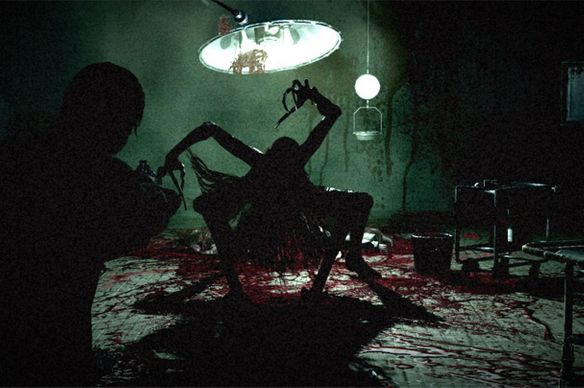
Luckily, the game has enough redeeming qualities to overcome its narrative shortcomings. For a start, the enemy design here is impeccable. From Siamese twins with wormy faces, to a J-horror girl with arachnid limbs, and a relentless stalker with a safe for a head, every creature here is both imaginative and intimidating. They also make for pleasingly diverse encounters, as each monster has different abilities and weaknesses. It helps ensure that no two set-pieces ever feel the same, as one minute you’re scanning for displacements in the water, in order to try and track down an invisible foe, and the next you’re trying to lull another tenacious enemy into a furnace. Even the standard fodder antagonists are refreshing in that they are not zombies, nor do they behave like zombies. These are more like deadities, with traces of their human personalities intact and the ability to wield makeshift weapons, survive bullets to the head, and search in hiding spots. In the monster department, The Evil Within certainty gets an A+.
Combat is also satisfying and challenging, even if the difficulty curve is occasionally too steep. There’s a pleasing sense of strategy to fighting, meaning that you have to learn certain tricks and methods in order to overcome the often overwhelming odds. From using melee weapons to conserve ammo, to making use of environmental advantages, and learning when to use what guns, there’s a lot to keep in mind. There’s also a competent stealth mechanic, and an accessible crafting system that allows you to build different types of crossbow bolts, both of which help the gameplay strike a good balance between action and horror. The only real issue with the design is that ammo distribution is far too inconsistent. For a game that throws hordes and hordes of monsters your way, you really need to have a fighting chance, something which The Evil Within often forgets to provide.
Some of the boss battles can accordingly feel overtly punishing or downright unfair. One in particular proved to be literally impossible for me, due to the fact that I had no health syringes and therefore had to try and limp my way through the level. Suffice it to say, this particular boss was too fast for that to work, and I had to go back to a much early save so that I actually could tackle the situation in the proper condition. It’s a shame, because the boss battle was initially quite scary and intense, before I lost patience with it. That’s something you should be prepared for as well; lots of frustration. With enemies that soak up bullets, bosses that are capable of insta-kills, and a general lack of supplies, this game can often test the patience of even the most hardcore horror gamer. On the one hand, I like the the sense of powerlessness and vulnerability, on the other, fear can very quickly turn into annoyance, and what was once a petrifying menace can soon become a major nuisance, as is often the case here.
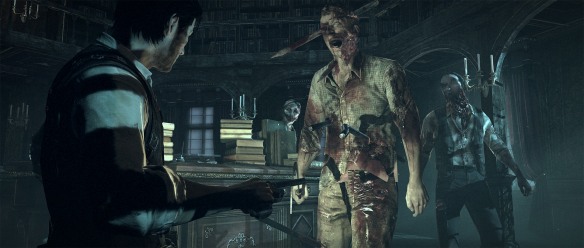
Another problem with the game is that it is thoroughly unoriginal. Every good idea it has is taken from either Resident Evil, Silent Hill 2, Outlast, Alone in the Dark, or Amnesia. In some cases the steals are quite blatant; ‘The Keeper’ is an obvious Pyramid Head knock-off, the invisible water enemies are plucked straight from Amnesia, and the entire first act of Resident Evil 4 is ripped off level-for-level. Even gameplay mechanics are copied over from the aforementioned games, with foes that you need to burn in order to destroy (AITD), and moments in which you’ll be hiding under beds in a derelict insane asylum (Outlast). In some instances these similarities are clearly deliberate homages, but in others I’m not so sure. Either way, it all feels too familiar for a horror fanatic like myself, and just makes me wish I was playing some of those other games. Still, there’s something kind of enjoyable about the ‘horror’s greatest hits’ style of this game. It’s like playing through a Top 20 list of the best horror games, which I mean as both a good and a bad thing.
This mixtape approach to horror also resultants in one of the most endearingly stupid aspects of the game; it’s absolute disregard for tone. I’m not even being sarcastic, I do find it kind of charming. Indeed, this is a game so all over the place, that it begins with you being stalked by a single enemy, unable to defend yourself at all, and ends with you in a flying Humvee firing a turret gun at a giant, fleshy Kaiju. Because the game is cherry-picking the best bits from a multitude of sources, it has no idea what it wants to be. High octane action-horror? Outlast style stealth-game? Silent Hill esque exploration of the psyche? Old-school survival horror? Zombie shooter? Is it set in a creepy old asylum or is it focused on an apocalyptic. city-wide disaster? Who knows? Why not try all of them? There’s literally one part of the game that has you transition from buddy-cop action tropes in a B-movie setting, to suddenly exploring dark and dusty catacombs alone. It’s a clumsy move, one that tries to weave between camp and disturbing in the space of a loading screen. Luckily, I happen to enjoy all these different types of horror, otherwise this would get on my nerves.
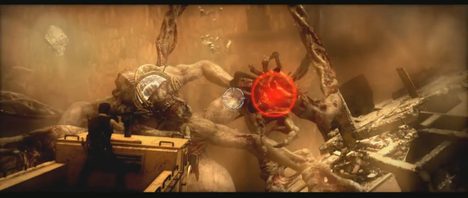
I think the compilation nature of The Evil Within is its greatest strength and its greatest weakness. Yes, it does mean we get to relive some fantastic moments from other games, but it also results in a messy structure, incoherent story, and a lack of originality. Still, if you can get past these failings (and the off-putting difficulty), then there’s a lot of guilty fun to be had with this title.
RECOMMENDATION: FOR HARDCORE HORROR FANS WHO HAVE EXPERIENCE WITH THE GENRE AND WANT A BIT OF EVERYTHING. JUST DON’T EXPECT MUCH FROM THE STORY.
RATING: 6/10
Alan Wake: Influences and Innovations
In the second episode of Harrison’s Halloween Horror Haul things get a little trippy.
If Outlast is a little too hardcore for you, then Remedy Entertainment’s interesting fusion of horror TV and literature might be more up your street. Unlike the last game that we talked about, Alan Wake is actually rather tame in the frights department. The jump scares are mild and infrequent, the violence is largely implied, and the enemies that you encounter are lacking in any real menace. This is horror intended for the fainthearted that’s for sure, but that doesn’t mean it has no value whatsoever. What the game lacks in intensity, it more than makes up for in style and narrative intrigue. Channelling David Lynch crossed with The Twilight Zone, this is a dreamlike and surreal supernatural thriller, with a palpable atmosphere and effective central mystery.
Released in 2010 to critical acclaim, Alan Wake is a postmodern celebration of everything that its creators hold dear. Twin Peaks, The Shinning, The Birds, Salem’s Lot, The Mist, Blue Velvet; all of these works are either name-checked directly or at least referenced to a certain extent here. The resultant game is an amalgamation of a variety of influences, from mystery television, to horror novels and cult cinema, but it still feels like a cohesive whole in and of itself. Indeed, Alan Wake is certainly one of the most singular games out there, with a distinctive tone and identity that feels unlike anything else. From its striking visuals, to its utterly bonkers plot, to its eclectic soundtrack, it’s a totally unique experience.
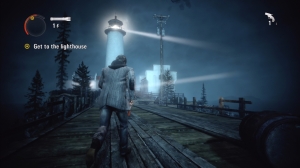
The game’s narrative is concerned with the eponymous novelist, who is vacationing with his wife at the small town of Bright Springs. As Wake himself points out, it’s the type of place that you’d assume was extinct, the kind where everyone knows each other and old queer superstitions are still held in high regard. It is a place that Wake is quick to disparage. We almost immediately come to resent the author, he’s anti-social, impatient, stuck-up and has quite the temper on him. Most of his angst seems to stem from the fact that he’s been suffering from writer”s block for several years now, causing him to lash out at his friends and his devoted spouse, Alice. When he discovers that Alice has actually arranged the whole getaway as a ruse, in order to convince him to meet a local therapist who specialises in treating struggling artists, Alan looses control and storms out of their rented cabin. Whilst he is cooling off, he hears Alice’s bloodcurdling scream for help. He subsequently rushes back inside to find his wife, only to see her sinking quickly in a nearby lake. Alan promptly dives into the water in an attempt to save her, but passes out in the dark and murky depths.
He then wakes up in his car, unsure of what has happened or where his wife is. He travels into the imposing, fog drenched forest in search of help, whereupon things get very, very peculiar. Alan soon discovers that strange shadowy creatures lurk in the woods, and that a supernatural force is controlling his every move. The plot thickens even more, when Alan comes across an unfinished manuscript for a novel that he supposedly worked on, but doesn’t recall writing. Said manuscript seems to have a prophetic quality, as every word written on the page describes upcoming events with startling accuracy. The weird stuff still doesn’t stop there either, as Alan also realizes that an entire week has gone by since Alice went missing, even though it only just happened. From there, a convoluted story is slowly and deliberately woven, involving other realities, a kidnapping plot, local crazies, and a floating man in a diver’s suit. No, I’m not making this up.
To be honest, condensing this elaborate narrative into a brief summary is nigh on impossible. Each ‘episode’ of the game introduces new elements and twists, so that just when you think you’ve finally got a handle of what’s going on, a new spanner will be thrown into the works, leaving you utterly bewildered. Say what you want, but you can’t fault the ambition of the storytelling here. It’s reminiscent of early era Lost, where you’re thoroughly confused and hooked at the exact same time. You’ll find yourself blasting through the game just to get answers and see where it’s all heading, and if you pay close enough attention, you might just leave feeling satisfied.
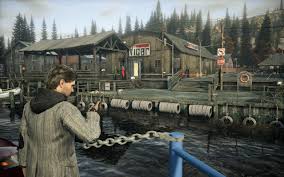
What’s unique about this particular mystery, when compared to say Twin Peaks or Blue Velvet, is that the amount of information you receive is totally dependent upon you as a player. Vital clues and pieces of exposition are hidden in the form of the elusive manuscript pages, which makes the usually tedious task of hunting down collectables far more appealing. Meanwhile, if you interact with certain characters during the exploratory sections of the game, they might elaborate further upon some things, and of course replaying levels is almost a necessity in order to get the full picture. How much ofAlan Wake remains unexplained is down to how you play, but either way you have to work with it if you want to make complete sense of the whole thing. Like Donnie Darko, It doesn’t hold your hand or spell things out for you and even when you have all the cards on the table, certain things are left open to interpretation.
It makes for a compelling storyline, and one that is told in a unique way, with the game being split up into ‘Episodes’, despite being released as a full product. Whilst this may seem like an odd creative decision, it kind of works. Each instalment has it’s own specific focus and objective, as well as a key theme at the centre. This division helps to structure the story in a clear-cut way, and I especially like the way that each episode ends with a nail-biting cliffhanger (meanwhile the ‘previously on’ segments really do help to provide some kind of orientation for the player in the confusing narrative). The episodic structure thus works for Alan Wake, even if it might initially seem like a showy stylistic choice that serves no purpose.
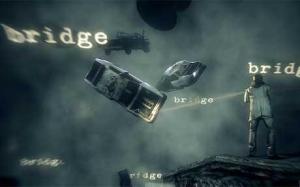
Indeed, there are plenty of unusual things about Alan Wake that are ostensibly weird for weird’s sake, but actually have a specific function. Take ‘Night Springs’ for example, the black and white sci-fi show that exists within the world of the game. Whilst playing, you can find TVs playing re-runs of this Twilight Zone parody and can then watch the whole thing. Doing so offers nothing in the way of narrative relevance. There’s no explicit connection between ‘Night Springs’ and the events occurring in Bright Falls, however it is a fun little addition. Moreover, each episode’s thematic content in some way correlates to the main narrative. For example, we have episodes dealing with other universes, dreams, ancient Gods, creators rewriting reality and people coming to terms with the fact that they are nothing but characters in someone else’s story. All of these are common themes shared by both ‘Night Springs’ and Alan Wake, and the former does a good job of exploring them in further depth.
The unconventional choices don’t stop there; there are whole sequences of the game where you do nothing but walk around talking to characters in broad daylight, which is hardly typical of an unrelenting horror game. Elsewhere, there’s the distinctive use of licensed music- which brings together various genres, periods and styles to form a very diverse collection of songs. The one thing that seems to unify the music choices here is that all of the songs are seemingly standard pop or rock tracks, that have a haunting or ethereal quality when used in the right context. In particular, Roy Orbison’s ‘In Dreams’ (which famously plays in Blue Velvet) has a sorrowful, creepy and almost operatic quality that fits the game like a glove. There aren’t any other horror games that use their soundtracks like this, which is understandable, because it shouldn’t work. But it does. In fact, it works fantastically.
Even something as straightforward as combat is rendered a little bit different in Alan Wake. Here, your supernatural foes are impervious to bullets and other forms of damage, unless they are exposed to light. This makes encounters far more creative, as Alan must use everything from flares, car headlights, torches and the environment itself to fend off the dark forces at play. It creates so many unique moments, such as the time when you have to stay in a helicopter search light in order to remain unharmed, or the bit where you get to take advantage of an old rock concert set up, so that you can hold off a horde of attackers. Can you name another release that so brilliantly merges an aesthetic element (in this case lighting) with gameplay mechanics?

Of course, Alan Wake isn’t perfect by any stretch of the imagination. If it were, I wouldn’t need to write this piece recommending it in the first place. Unfortunately, there are some areas in which the game design really lets the overall product down. Strangely enough for a game that takes so many risks, it’s actually the more conventional aspects of gameplay that it seems to struggle with. For example, both shooting and driving feel awkward and clunky, which is frustrating when so much of your time requires you to be doing these things. Similarly, things get very repetitive after a while, and the initial novelty of the combat mechanics start to wear off after the 200th time that you’re ambushed in the woods.
It also feels like the story can’t maintain its sense of mystery throughout, as the second half of the game gives way to a much more conventional horror narrative and the dreamlike tone of the earlier sequences is lost in favour of something much more schlocky. There is indeed a tonal shift at around episode 5, at which point everything weird and special about Alan Wake almost instantly disappears. It’s the point where Stephen King and David Lynch are disappointingly traded in for generic survival horror tropes. Finally, there’s the aforementioned fact that, for a horror game, it’s not scary in the slightest. Don’t get me wrong, it has atmosphere down to a T, but I’ve played first person shooters with more scares than this.
Nevertheless, Alan Wake is a glorious experiment that really deserves more attention. Whilst it might fumble in the gameplay department from time to time, it has so much personality and does so many interesting, daring and unique things, with almost all of them pays off. Featuring a killer narrative, top quality world building, and a distinctive style, Alan Wake may not be the scariest horror game out there, but it is still one of the best.
RECOMMENDATION: FOR THOSE OF A MORE NERVOUS DISPOSITION, ALAN WAKE IS AN ENGAGING PSYCHOLOGICAL THRILLER, WITH A FASCINATING STORY AT ITS CORE.
RATING: 8/10